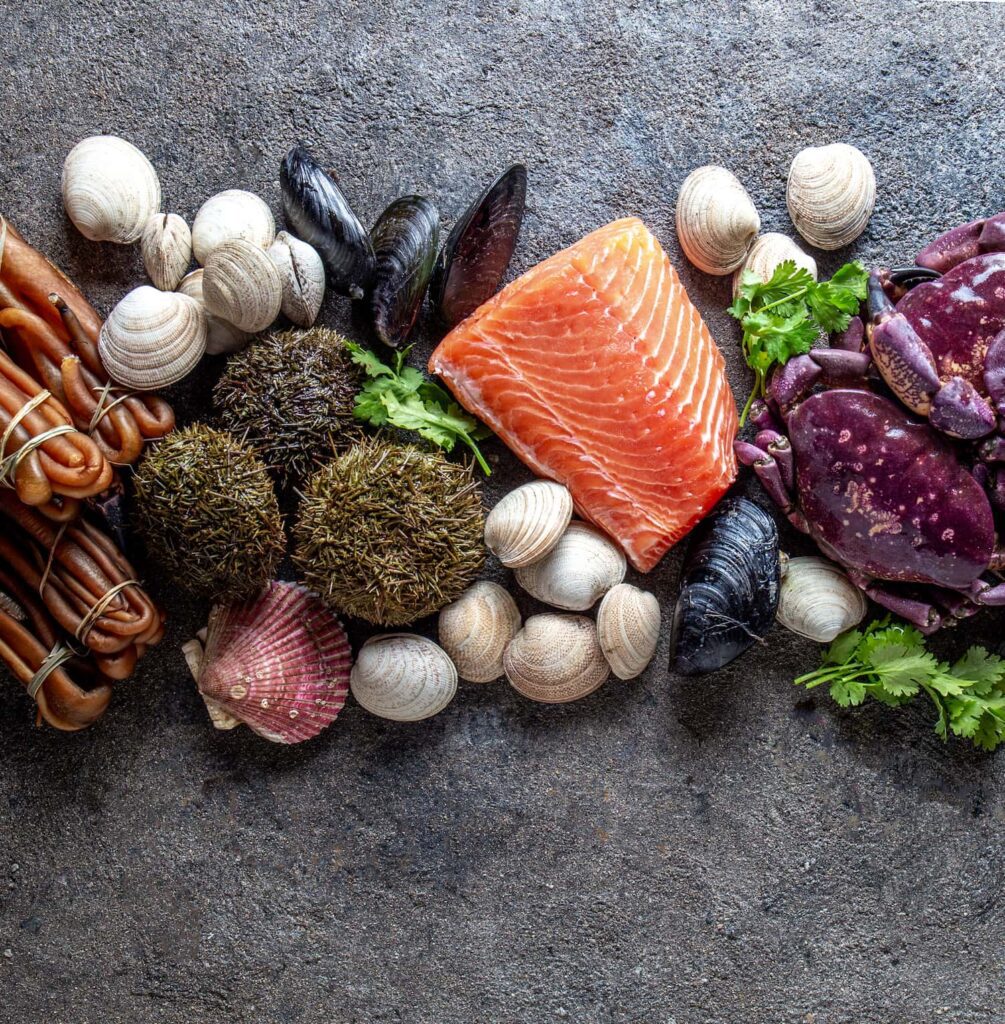Remember back to high school. A time when your worries were less about the business of today and more about exams and that health class everyone took.
That health class was probably where you were first introduced to the food pyramid. But that American food pyramid is not the only one in existence.
Japan has a unique food pyramid that has been shaped for centuries based on agricultural techniques, cooking styles, and overall taste.
Keep reading to learn about:
- What the pyramid looks like
- The components of each section
- Nutritional value of each group
So get ready to get hungry as we dive in and learn more about the Japanese Food Pyramid.
That’s no Pyramid… That’s a Top???
That’s right, the Japanese food pyramid is actually a top!

Japanese culture looks at the foundation of their diet from the top-down. The most basic of food groups, much like in the US, are at the top with water and grains. But there are some differences.
Vegetables take up a much larger portion of the Japanese diet with a recommended 5-6 servings a day and meat products only 3-5 servings per day.
Fruits also move higher due to a lack of the ability to farm it. With Japan being a mountainous region, this terrain is more beneficial for growing vegetables.
Understanding the Japanese Food Pyramid: A Guide to Balanced Nutrition
The Japanese foot top is a unique approach to balanced nutrition that reflects the country’s dietary habits and cultural preferences. Unlike the Western food pyramids, the Japanese model emphasizes variety, balance, and moderation. These traits embody the traditional Japanese diet as well as many aspects of their culture. This Japanese food pyramid in the shape of a top is a visual representation of the types and proportions of foods recommended for a healthy lifestyle. Let’s explore each section in detail.
Breads and Grains
At the top, we have breads and grains forming the largest section, indicating their foundational role in the diet.
Types of Foods
- Rice (white or brown)
- Noodles (soba, udon, ramen)
- Bread
- Other grains like barley and millet
Nutritional Benefits
Grains are a primary source of carbohydrates, which provide the body with energy. They also offer essential nutrients like fiber, vitamins (especially B vitamins), and minerals. Brown rice and whole grains are particularly valued for their higher fiber content and nutritional benefits.
Vegetables

Just below grains, vegetables occupy a significant portion of the pyramid. This is due to the availability and types of farming available in Japan.
Types of Foods:
- Leafy greens (spinach, bok choy)
- Root vegetables (daikon radish, sweet potatoes)
- Sea vegetables (nori, wakame)
- Cruciferous vegetables (broccoli, cabbage)
Nutritional Benefits
Vegetables are rich in vitamins, minerals, and antioxidants. These contribute to overall health by supporting such bodily functions as immune function, reducing inflammation, and preventing chronic diseases.
The Japanese diet includes a variety of vegetables, often consumed in different forms like raw, steamed, pickled, or stir-fried.
Fish and Meat

Fish and meat are placed below vegetables, with a slightly smaller section, reflecting their importance but in moderate quantities.
While the western world is familiar with Kobe Beef and its high quality from the Kobe region, traditional Japanese protein is found more with fish-based dishes.
Since Japan is a group of islands, it is much easier for them to rely on fishing as a means to collect protein-rich food.
Types of Foods:
- Fish (salmon, mackerel, tuna)
- Shellfish (shrimp, scallops)
- Poultry (chicken)
- Lean meats (pork, beef in smaller amounts)
Nutritional Benefits
As noted earlier, fish are a cornerstone of the Japanese diet, known for its high-quality protein and omega-3 fatty acids. These are beneficial for heart health and brain function. That is why you see them as supplements in your local grocery store so often.
Meat provides essential amino acids and nutrients like iron and vitamin B12. Both are important to maintain a healthy diet.
Fruits

Fruits are placed above meats and fish, indicating their beneficial role but recommending moderate consumption. This goes similarly for the dairy products as they share the bottom spot on the Japanese food pyramid.
Types of Foods
- Apples
- Citrus fruits (oranges, yuzu)
- Berries
- Melons
- Grapes
Nutritional Benefits
Fruits provide vitamins (especially vitamin C), minerals, fiber, and antioxidants. They contribute to overall health by supporting the immune system, improving digestion, and offering natural sweetness to the diet.
In Japan, fruits are often consumed as snacks or desserts. This is why they are at the bottom.
Dairy
Dairy occupies a smaller section with fruits, reflecting moderate consumption.
This can be explained primarily by the fact that Japan has a history of lactose intolerance. In 2015, a study showed that over 45% of Japanese citizens were lactose intolerant. While this number has come down in recent years, it shows a history of problems with dairy.
This is one of the main contributors to dairy being such a small section of the Japanese diet.
Types of Foods
- Milk
- Yogurt
- Cheese
Nutritional Benefits
Dairy products are important for bone health due to their high calcium content. They also provide protein and other essential nutrients like vitamin D. However, the Japanese diet traditionally includes less dairy compared to Western diets.
The Extras
Much like the traditional food pyramid in the US, there is always a little room for the food that may not be needed in your diet. All that matters is they taste amazing!
Confections and Snacks
Confections and snacks should be consumed sparingly but are always a fun treat to have after a long day or if you’re just feeling a little snacky.
Types of Foods:
- Sweets (wagashi, mochi)
- Snacks (rice crackers, senbei)
- Sugary drinks
Nutritional Benefits
While these foods provide enjoyment and cultural significance, they are high in sugar and should be eaten in moderation to maintain a balanced diet.
Experience More Japanese Culture at Kobé Steakhouse!
Now that you know all about the Japanese food pyramid and see how the years of history and agriculture shaped the traditional Japanese diet, come to Kobé Japanese Steakhouse to try it for yourself!
Get a taste for Eastern food and culture as you now fully grasp why each dish includes certain ingredients and why specific food groups are emphasized.
Get your own foodie group together and try out table-side hibachi dinner show and watch our amazing chefs work their magic to entertain and fill you up!
Book your reservation today!
